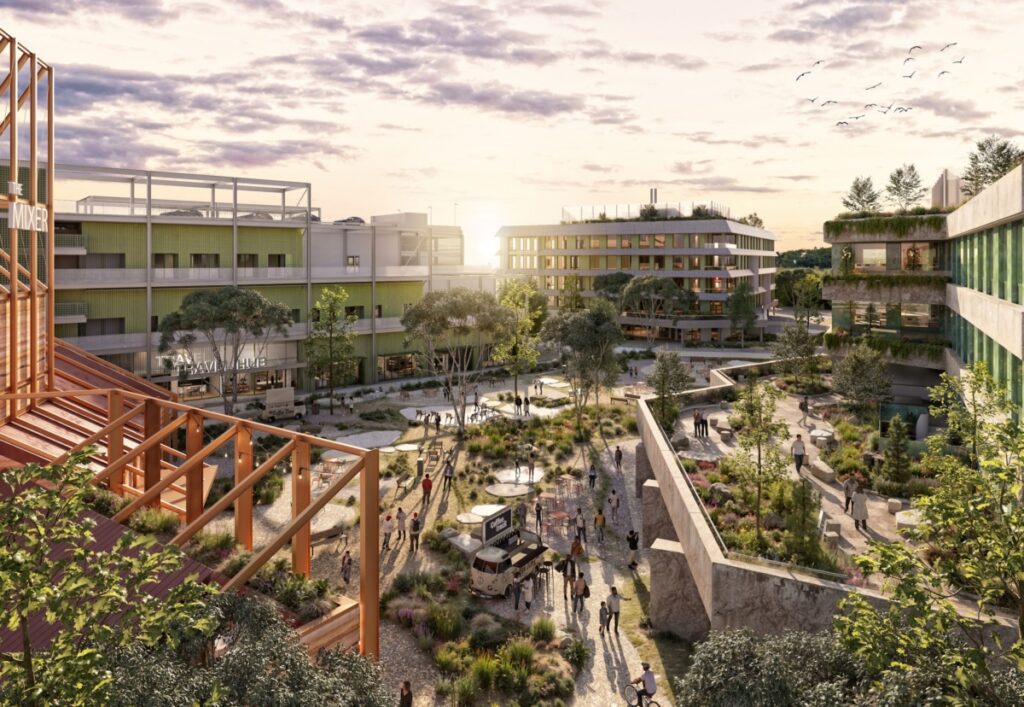Cambridge City Council has given the green light to a major new science district, set to become one of the largest urban research hubs in the UK. The development, approved pending Section 106 agreements and conditions, will transform a long-unused site just 10 minutes by bike from Cambridge’s central railway station.
This ambitious project will create a space designed to accommodate research and development activities for companies at all stages of growth, from start-ups to global multinationals. The district will allow innovative firms to scale without needing to relocate or split their operations, positioning them within a major science and technology cluster in the heart of Cambridge.
The development will cover 1,000,000 square feet across seven buildings, with master planning led by Hawkins\Brown, alongside other renowned design firms. A pedestrianised central square will serve as the focal point, offering public access and a range of community amenities. These include spaces for local businesses, fitness facilities, a significant expansion of play areas for children, diverse food and beverage options, and a flexible events venue.
A key feature of the project is its emphasis on public engagement. Plans include an Artist in Residence programme and a STEM-focused educational outreach initiative in partnership with the Cambridge Science Centre, already in action at local schools.

“This project breaks the traditional mould of science parks by creating an open and inviting innovation district,” said Artem Korolev, CEO of Mission Street. “We’re blending R&D space for world-class innovators with community facilities everyone can enjoy. It’s proof that cutting-edge science can coexist with public amenities in a way that benefits both.”
The need for such a development is pressing. Market data from Mission Street shows that demand for lab space in Cambridge is outpacing supply, with over 600,000 square feet needed. The high demand for inner-city R&D space, a relatively new concept in the UK but well-established in the US, highlights the importance of this project.
During its construction, the development is expected to create over 800 jobs and inject £7 million into the local economy, alongside apprenticeships and training opportunities. Once completed, the district will generate nearly 4,000 high-skill jobs, with all positions paying at least the Cambridge Living Wage.
The science district is part of a larger pipeline of over 1.5 million square feet of lab and office space being developed by Mission Street and BGO across key locations such as Cambridge, Oxford, and Bristol. Other notable projects include Fabrica and Inventa in central Oxford, providing 180,000 square feet of flexible R&D space, and The Press in Cambridge’s Southern Biomedical Cluster, which offers 100,000 square feet of lab and office facilities.

Sara Parker
Kitchen Chronicles
Join me on my journey to a healthier lifestyle
 Biopharma Business News
Biopharma Business News
- How Data Secrecy Is Stalling Progress in Cell and Gene Therapy
- Following Challenges With DMD Therapy, Sarepta Will Cut 500 Employees
- BMS, Pfizer Join DTC Trend, Offering Eliquis to Patients for 40% Below List Price
- Sarepta Up 18% After Business Overhaul as Analysts Cautiously Optimistic
- Novartis ‘Moving as Fast as Possible’ to Fully Manufacture Key Drugs in US as Tariffs Near
- Sarepta Tags DMD Gene Therapy Elevidys With Black Box Warning, Axes 500 Staff
- Webinar: Pharma Industry in Crisis
- J&J Targets $50B Oncology Sales By 2030: Updated
- Merck, AstraZeneca Cancer Collaborator Gets Swallowed Up by Sino Biopharm
- FDA Layoffs, 200 Rejection Letters, User Fees and Priority Vouchers, Bad Week for Rare Disease


